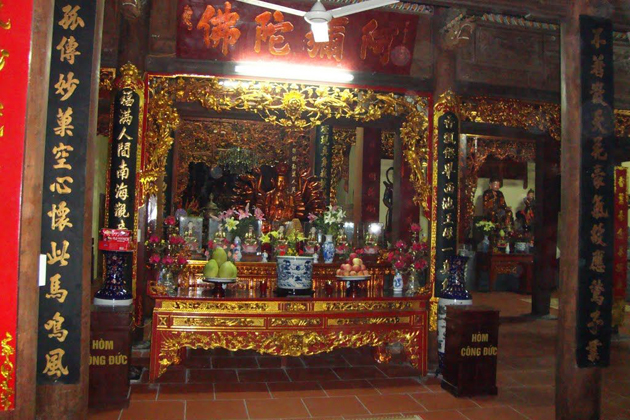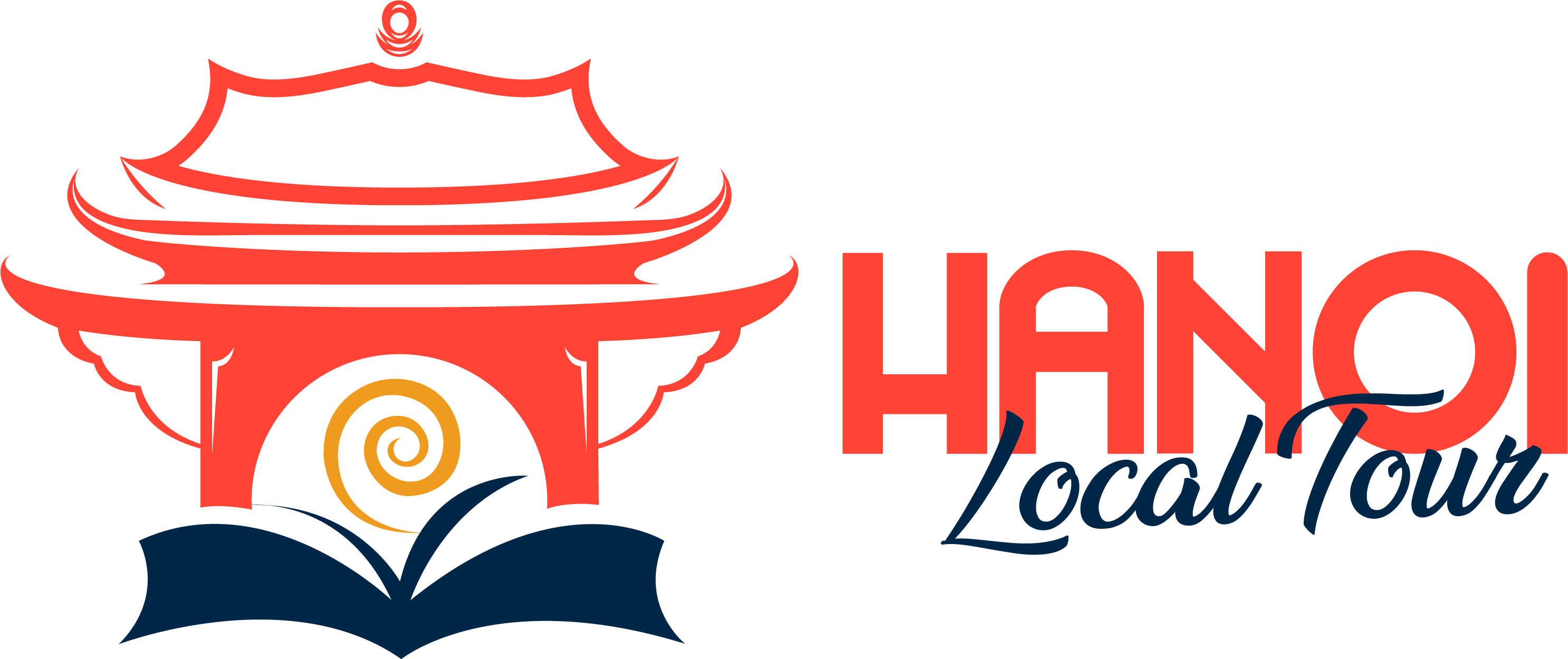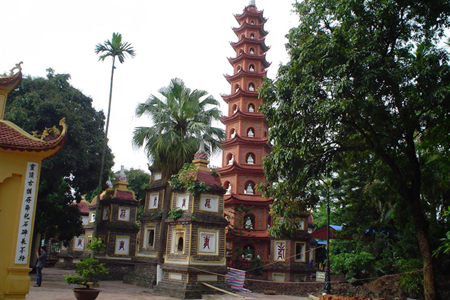For a long time, the belief of worship has existed in the heart of every people in Vietnam. In the capital, Hanoi, right on the bustle and hustle streets, there are more than 100 pagodas both large and small to serve the spiritual belief of Hanoians. In which, the most famous and sacred pagodas are listed in the following.
Perfume Pagoda
Named as the second most beautiful pagodas of Vietnam, Perfume Pagoda is the worthiest pagoda to visit when traveling Hanoi. Huong Son Pagoda, also known as the Perfume Pagoda, is a pagoda complex located in My Duc district, Hanoi. This is a famous temple of the North because the pagoda is both sacred and situated in the charming place with beautiful sceneries and peaceful atmosphere. Visit here, you can pray for peace, sightsee the pagoda and enjoy many exciting unique specialties.
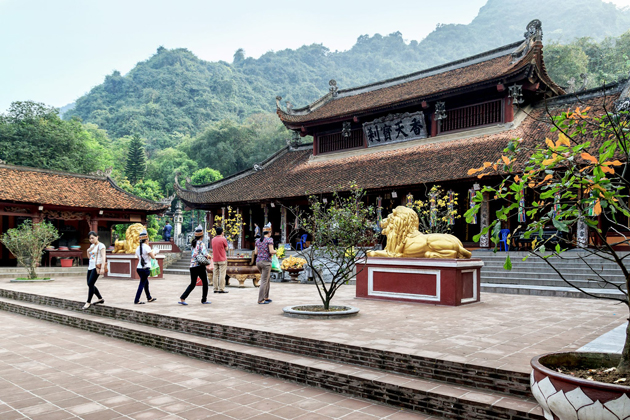
Tran Quoc Pagoda
Tran Quoc Pagoda is one of the oldest pagodas in Hanoi. Placed in the West Lake, this pagoda is known as the jewel in the heart of West Lake. The pagoda has unique and harmonious architecture, along with the surrounding natural landscape which makes a charming scenery. In the ancient time, Tran Quoc Pagoda was where the king frequently came to go sightseeing, compose poetry, and make conversation about politics or organize the celebration and Tet. Today, the pagoda is the destination for tourists from everywhere to visit and burn incense in pursuit of a prosperous and peaceful life.
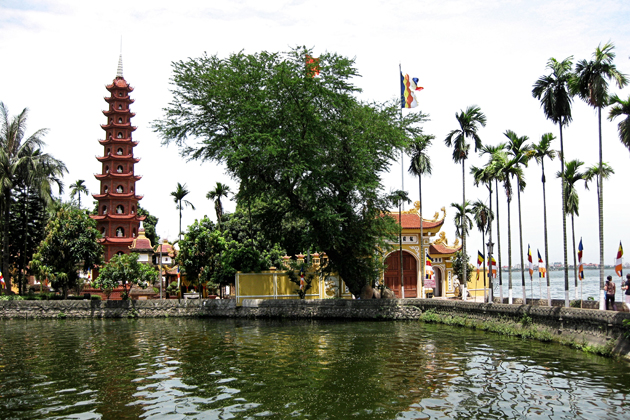
One Pillar Pagoda
One Pillar Pagoda has the most unique architecture in Asia. This is seen as one of the oldest buildings in Hanoi and is a symbol of the capital with thousands of years of civilization. Architecturally, One Pillar Pagoda has a simple design but carries profound humanity and five elements of yin and yang. It was built by an outside square block standing for yang, and a round column inside symbolizing yin. In the yang has yin, yin supports yang, yin and yang are intertwined as heaven and earth. Four corners of the pagoda’s roof are curved into dragon head shape. One Pillar Pagoda is built on a lake, there are many lotuses planted in the lake expressing the most ethereal feature which makes the pagoda have majestic, solemn and elegant beauty.
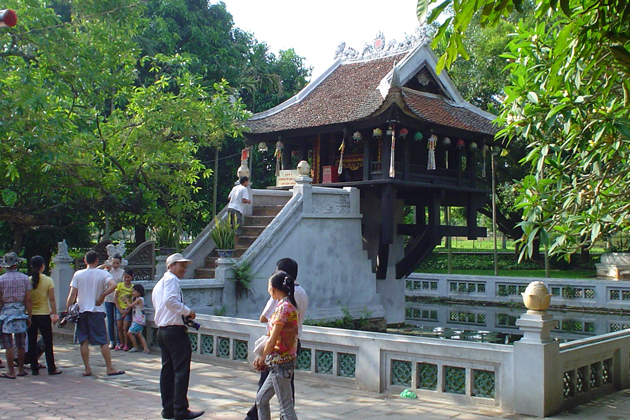
Quan Su Pagoda
Quan Su Pagoda is located on Quan Su Street of Hoan Kiem District. This is the famous sacred pagoda and is the headquarters of Buddhist Sangha of Vietnam. Through more than six centuries, this ancient pagoda has seen numerous significant historical events of Buddhist Sangha. The particular feature of Quan Su Pagoda is that all parallel sentences are written in national language script. The tourists who enjoy the spiritual travel cannot ignore Quan Su Pagoda in your journey.
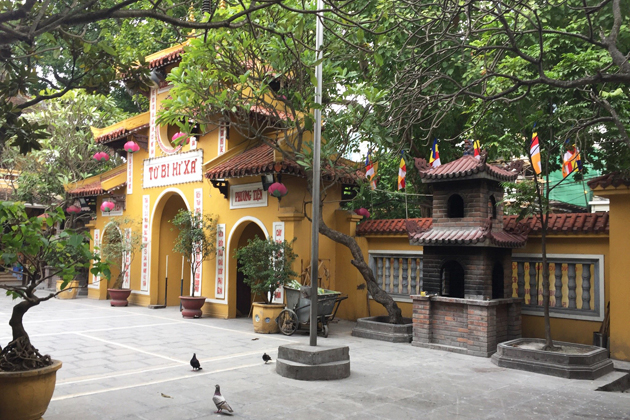
Cau Dong Pagoda
Situated right on the noisy and crowded Hang Duong street (Hoan Kiem district), however, Cau Dong pagoda always owns the peaceful atmosphere of a sacred place and carries the characteristics of ancient architecture. Especially, this is the only place in Hanoi worshiping Tran Thu Do, who declared the beginning of Tran dynasty (1225-1400). Since its construction in the 15th century, the pagoda has gone through ups and downs of history and has been renovated many times. Compared to other ancient pagodas in Hanoi, Cau Dong Pagoda is known as the pagoda that has preserved 60 valuable ancient Buddha statues. Moreover, Cau Dong pagoda is not only a cultural relics of Hanoi but also a revolutionary base in the war against France and the United States.
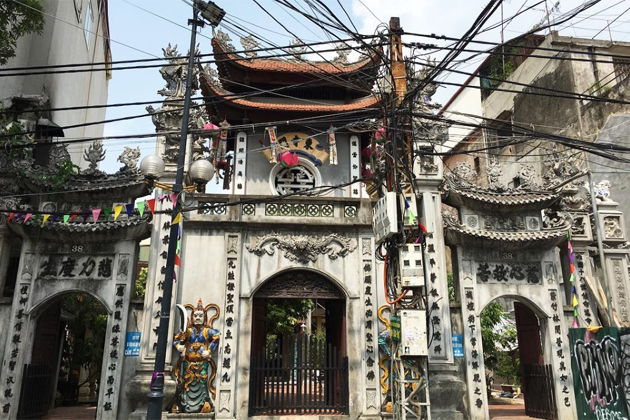
Lang Pagoda
Chua Lang also called Chieu Thien Tu is located in Lang Thuong street of Dong Da district. Lang Pagoda was built in the reign of King Ly Than Tong for the purpose of worship Tu Dao Hanh, a well-known religious enlightenment practitioner because of high moral standards. The pagoda was very famous in Thang Long by the majesty of architecture and the harmony of space. In the pagoda, the campus is quite large in combination with old trees creating a peaceful and quiet environment. The lush greenery and fresh air here will surely make tourists have a sense of calm and peace as well as satisfy the curiosity of historical value of the pagoda.
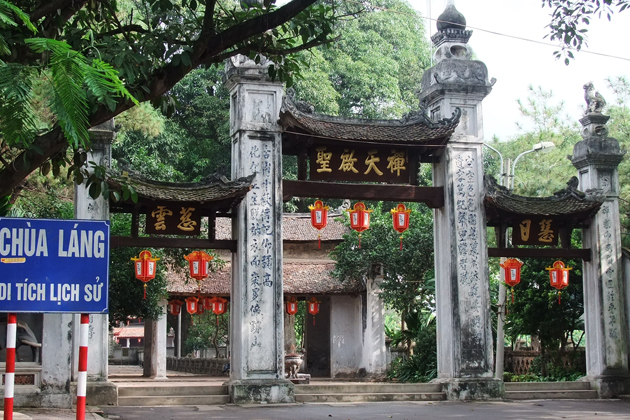
Ngu Xa Pagoda
Ngu Xa Pagoda also is known as Than Quang Tu or Phuc Long Tu in Truc Bach, Ba Dinh District. The pagoda was built in the Later Le dynasty, 18th century, worshiping Buddhism and the father of copper casting – Nguyen Minh Khong. Ngu Xa Pagoda is one of the three temples in Hanoi was rebuilt in the 40 and 50 decades with new materials (cement, steel), but retained the classic style of the pagoda. This pagoda is a focal point of the beautiful peninsula near Truc Bach lake. Visit this relic, travelers can not only find the virtual nothingness of the spiritual world but also see one of the famous handicrafts in Thang Long.
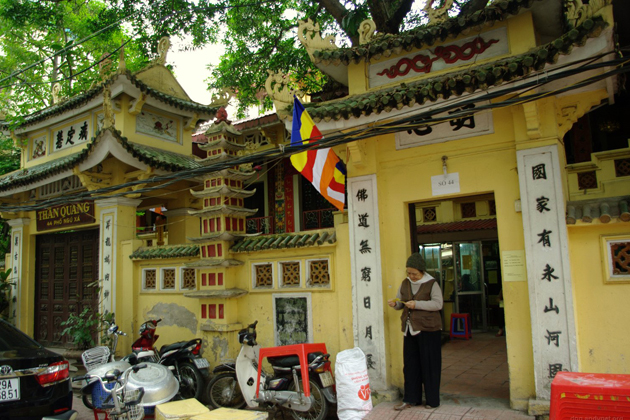
Hoe Nhai Pagoda
Hoe Nhai pagoda or Hong Phuc Tu is located on the spacious area and the green space with the shadow of areca and old Buddha trees. The pagoda was built under the Ly dynasty and was repaired and rebuilt several times in 1699, 1703, 1812, 1894, 1920, and 1946. The pagoda has many red lacquer trimmed with gold Buddha statues with a style of the 18th century. The most particular is the statue with the most special shape and unique in Vietnam which is the dual statue of a king kneeling with a Buddha statue on his back. It is related to a legend of King Le Hy Tong’s repentance. Visit Hoe Nhai pagoda to explore the remnants of the pagoda as well as understand the spiritual life of Hanoian in particular and Vietnamese in general.
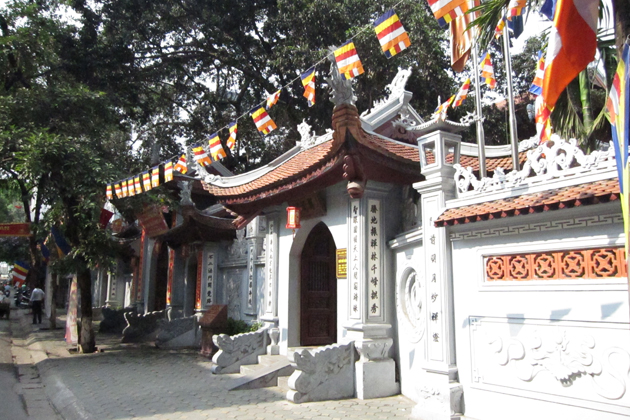
Kim Lien Pagoda
In Vietnamese, “Kim Lien" means "Golden Lotus" located on Nghi Tam street, on the bank of West Lake. The name of this ancient pagoda stands for the symbol meaning of elegant, noble, and ethereal beauty of Buddhist. The pagoda is considered a golden lotus in the heart of Hanoi. The legend said that this is where Tu Hoa princess – daughter of King Ly Than Tong, along with all imperial maids did sericulture to weave the fabric of this place. Nghi Tam name was originated from this time. The pagoda was built carrying the feature of the old imperial palace. On columns, roof, arches carved the dragon, phoenix symbolizing the majesty, splendor of the royal place. Other details of the temple were erected entirely from rare wood restricting the devastation of termite.
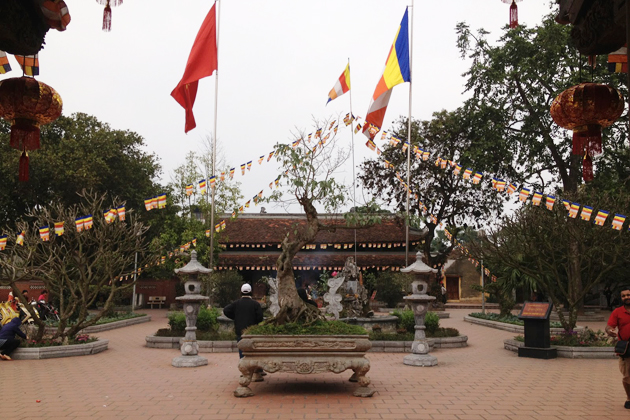
Lien Phai Pagoda
Lien Phai pagoda (Hai Ba Trung district) was built in the 18th century, at the beginning, the pagoda was called Lien Hoa pagoda, then renamed Lien Tong in 1733. In 1840, to abstain the name Nguyen Phuc Mien Tong of King Thieu Tri, this pagoda was named Lien Phai until now. It is the origin of the Lien Tong sect (Lotus flow) - one of the Zen sects of our country – which appeared in late Le dynasty (the 17th and 18th century). The temple also has 5 – floor tower which is nearly 300 years old. This is the oldest tower with the clearest information in the urban area of Ha Noi. In approximately 1890, people also built a nine-story tower with beautiful architecture in the pagoda. However, under the war and the destruction of time, this tower now has only 7 buildings remaining.
